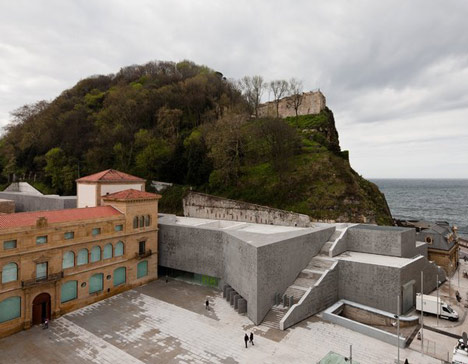Maybe, slowly, life is starting to return to some semblance of normal and people are going to start traveling again, visiting family and friends they haven’t seen for over a year or more. If you find yourself in the Basque Country with some time to spare, check out the San Telmo Museum. Nestled in the heart of Donostia at the foot of Mount Urgull, it hosts an amazing collection of art and objects detailing the life and history of the Basques.

- The museum sits in a building that dates back to the 16th century, when it was used as a convent by Dominican friars. It was built thanks to the patronage of one Alonso de Idiáquez, Secretary of State of Emperor Carlos I, and was dedicated to San Telmo, the patron saint of sailors. The convent was damaged in 1813 during the War of Independence and was later confiscated in 1836, when the friars were kicked out and the building became an artillery barracks. By the end of the 19th century, the building was in bad shape. In 1913, the tower and cloister were declared national monuments and, by 1932, the city turned the building into the municipal museum.
- The museum itself was started a bit earlier, in 1900, thanks to the support of the Sociedad Económica Vascongada de Amigos del País. At the beginning, the museum had no funds to curate its collection, so it asked for donations from the people of the city to get going. It wasn’t long before it out-grew its space and the move to San Telmo was proposed.
- From 2007-2011, the museum underwent a major renovation with a new extension designed by the architects Fuensanta Nieto and Enrique Sobejano. The extension features a porous façade that is both meant to mimic the erosion of older stone but also to provide a place for vegetation and light to penetrate the wall. There is also a staircase by which people can climb up to the roof level and up to Mount Urgull.
- Today, the museum hosts a collection of more than 26,000 pieces. While focusing on ethnography and fine arts — particularly contemporary Basque painting — it also has collections on photography, archeology, and history. One of the highlights is a series of paintings by José María Sert, who was commissioned for the inauguration of the museum to recreate the life and history of Guipuzcoa in eleven scenes.
- The museum has three temporary exhibits currently on display. Sheltered by Urgull highlights the prominent role that Mount Urgull has in the life of Donostia. Between the smoke and the haze features the photographs of Siegfried Koch Bengoechea, including his photos of the bombing of the Basque Country during the Spanish Civil War. Finally, The close look features the work of María Millán and her photographs of the people and places of The Dominican Republic, Tanzania, Ethiopia, Mongolia and Peru.
Primary sources: Barandiaran García, Ander. Museo de San Telmo. San Sebastián. Enciclopedia Auñamendi. Available at: https://aunamendi.eusko-ikaskuntza.eus/es/museo-de-san-telmo-san-sebastian/ar-83515/; San Telmo Museoa, Wikipedia.
If you get this post via email, the return-to address goes no where, so please write blas@buber.net if you want to get in touch with me.
Discover more from Buber's Basque Page
Subscribe to get the latest posts sent to your email.

